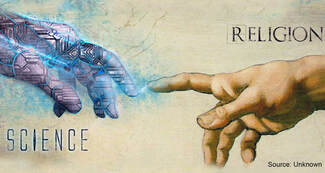John writes ... Our friend Dr Ruth Bancewicz is Church Engagement Officer at the Faraday Institute for Science and Religion in Cambridge. She has recently written an open letter to the Church of England Newspaper to which we have also posted a link on our book’s Facebook page. Her letter is entitled ‘Starting new conversations about science and faith’ and her opening discussion is focussed on something that is dear to both my intellect and my emotions, namely connectedness and inter-connections in nature. Ruth focusses on the extensive network of fungal mycelia that exists beneath the woodland floor providing myriad interconnections between the trees, as I also describe in Chapter 8 of our book. The ‘wood-wide web’, as some have called it, is a beautiful example of mutual support and enablement, leading to fruitful growth of both trees and fungi (in the latter, the appearance of mushrooms/toadstools is a sign of their fruitfulness). For readers who are particularly interested in finding out more, I recommend Merlin Sheldrake’s book Entangled Life.  Ruth suggests that a truly effective congregation should be a network of people, often working behind the scenes, perhaps even hidden, but providing extensive support and help in a mutually dependent way. Further, the establishment by the Church of England of the Anglican Science Commission emphasises the roles of scientists in congregations being active members of such networks. In the network beneath the forest floor one of the things that is shared is molecular information, often in the form of what biologists call ‘signalling’ molecules, molecules whose evolved purpose is to elicit a biological response. In the case of the scientist-Christian this may mean interpreting recent scientific findings and helping our fellow-Christians appreciate the beauty and wonder of the created order. We hope that our readers appreciate that aspect of our book and we note that Ruth herself discusses it at length in her recent book, Wonders of the Living World: Curiosity, Awe and the Meaning of Life. Or we may be able to stimulate discussions about the ethics of applying new knowledge or new science-based techniques or inventions (as is currently happening for genome editing and for AI). Or it may simply be a matter of just ‘being there’, one of thousands of members of the scientific community for whom science is not a threat to faith but a stimulus for worship. John Bryant Topsham, Devon July 2021
0 Comments
|
AuthorsJohn Bryant and Graham Swinerd comment on biology, physics and faith. Archives
July 2024
Categories |

 RSS Feed
RSS Feed
